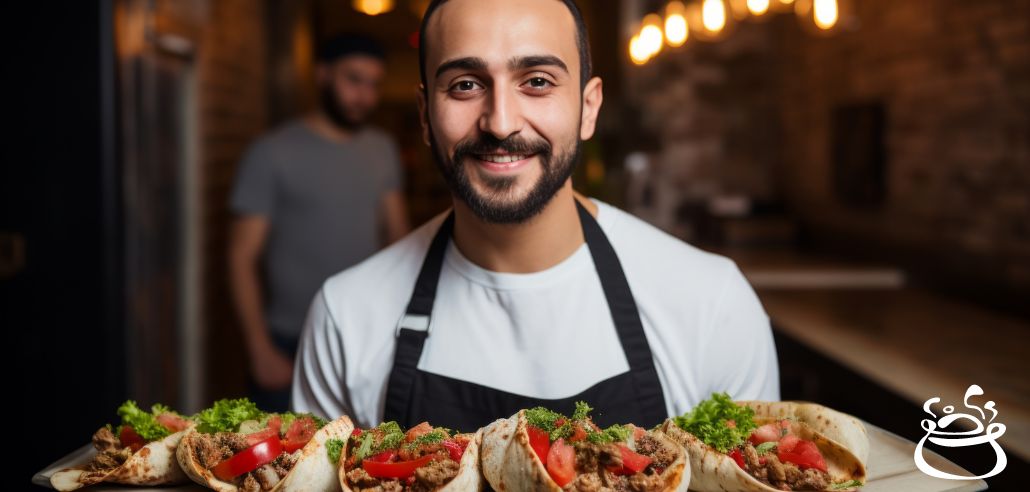Elevating Your Dish: The Latest Trends in Food Plating
When it comes to food, we all know that presentation is key. However, you may not have realized the immense thought and dedication that even the simplest dish requires to make it look its best. From arranging spices like a pro to understanding the essentials of modern food plating trends, this blog post has it all – no matter what level of experience you have with turning basic dishes into works of art. We’ll start by exploring the roots of food plating and discuss why it can effectively make a lasting impression at dinner parties or special events.
With some simple tips that anyone can follow and plenty of creative ideas for more experienced chefs and restaurateurs alike, you’ll soon be mastering this vital cooking skill in no time. So settle in for an enlightening ride as you learn how to plate any dish artfully.
History of Food Plating
Food plating has a rich history, originating in the French court in the 1600s when Louis XIV instructed chefs to present food in the most elegant way possible. Since then, the goal of food plating has been to create visually appealing designs that satisfy the palate. While food presentation has been a part of culinary history dating back to ancient civilizations, it wasn’t until the 19th century that French chefs like Auguste Escoffier refined and formalized food presentation, raising its importance in the culinary world.
Today, food presentation has evolved into an art form where plates are transformed into canvases, with culinary experts using various techniques to create stunning displays. This transition has made food more than just a functional necessity and has turned it into an impressive visual experience.
Thankfully, fancy food presentation is no longer exclusive to high-end restaurants, as anyone can create a visually appealing display with a few simple tips. So let’s grab a palette knife and explore the art of food plating. After all, we all eat with our eyes first.
Present-Day Trends in Food Plating
“Present-day trends in food plating have evolved significantly, making food presentation more crucial. Restaurants worldwide are taking food plating to a new level by using bold colors, unusual shapes, and unexpected fun ingredients like edible flowers, interesting herbs, and even gold leaf.
With the rise of Instagram-worthy dining experiences, contemporary cuisine offers an array of visually stunning options, from classic restaurant dishes with artfully drizzled sauce to trendy bento box designs.
As a result, diners and chefs alike are enthusiastic about experimenting with creative plating ideas. Whether arranging a stack of pancakes symmetrically, placing the chicken on a bed of vegetables, or sculpting edgy ingredients, each style highlights a distinct visual appeal. With each new style, chefs worldwide continue discovering new and exciting ways to serve meals.
If you want to add a unique touch to your next dish, explore the exciting world of food plating and let your creativity run wild.
Essential Tips for Elevating Your Dish Through Food Plating
It’s no secret that the presentation of a dish is almost (if not equally) as important as its taste. Fortunately, there are some ways to take your food plating game to the next level.
Choose the Right Dishes
The type of dish you use for plating says just as much about a dish as its ingredients. Use specific plates, bowls, or serving dishes that will enhance or contrast the colors of a dish, or pick something that complements the flavor profile. The choice of a specific dish can also be great if you’re trying to make a statement on the table – think bright colors or unique shapes.
Remember the Rule of Odd Numbers
When arranging elements on a plate, odd numbers such as 3 or 5 tend to look better than even numbers like 2 or 4. This arrangement helps create visual interest and breaks up any flat areas on the plate. Using this rule for added visual appeal, you can also mix textures (such as soft and crunchy).
Use a Variety of Shapes and Textures
Even if you’re sticking with one type of ingredient for a dish, try adding different shapes and textures for an interesting contrast in texture, shape, and color. For example, serve grilled vegetables with sliced or diced vegetables, which adds depth, variety, and visual allure to your dish.
Add Garnishes or Herbs
A few strategically placed fresh herbs can help bring out flavors in a dish while adding extra visual appeal at the same time. You can add edible garnishes such as edible flowers or slices of citrus fruits for added color and texture contrast.
Play with Colors and Contrasts
Color plays an essential role in food plating — it’s all about creating contrast between different elements on the plate so that each component stands out. Consider playing around with different colors and shades when putting together your dish, including things like contrasting sauces/dips against lighter-colored ingredients such as fish or vegetables.
Keep It Clean
Ensure your plate is clean before you serve. Even if you’ve created perfect contrasts between elements within a single dish, a dirty plate can easily detract from those efforts due to smudges or fingerprints still visible on the surface of the plate itself.
Creative Ideas to Try Out When Plate Up Your Dishes
Creating a dish that looks delicious and irresistible can be a challenge— fortunately, there are plenty of ways to get creative with plating. Whether you’re a professional chef or an amateur home cook, trying out the following ideas for plate presentation will make your dishes look irresistible.
Edible Flowers
Adding edible flowers as a garnish to your dishes can make them look more elegant and delectable. Choose blooms in season, such as roses, lilies, chamomile, lavender, or marigolds. Cut them into small pieces and sprinkle them on the dish before serving. Not only do they look beautiful, but they also add an unexpected burst of flavor and color.
Colorful Garnishes
Take advantage of the vibrant colors of fruits and vegetables to create garnishes for your dishes that will make them stand out. Slice tomatoes into thin discs and arrange them around a plate; sprinkle fresh chives over a dish for a pop of green; grate carrots into ribbons for a splash of orange; or dice some mango into cubes for a hint of yellow.
Seasonal Arrangements
Incorporate seasonal ingredients into your presentation to give it an extra special touch. For example, using sprigs of rosemary or thyme during the winter months will make your dish look cozy while adding herbs like basil or parsley during the summertime will freshen up the platter.
Creative Shapes
Have fun with creating shapes when you plate up your food – use cookie cutters to cut vegetables like zucchini and squash into stars, hearts, or crescents; shape mashed potatoes into fun figures like hearts or animals; or serve the risotto in rounds with an imprinted swirl on top for an extra touch of style.
Sauces & Drizzles
Use sauces and drizzles as accents to tie all elements together on a plate – drizzle balsamic vinegar over salad greens; spoon crème fraiche onto fish dishes; add pesto sauce to rice dishes; pour melted butter over steamed vegetables; or spread mayonnaise on sandwiches.
Vertical Presentation
Elevating food off the plate can be done in many different ways – stack foods high on top of each other (like sliders); place small portions in shot glasses sitting atop larger plates; build cheese towers with multiple layers of cheese and crackers arranged on sticks; create cone-shaped mousses by freezing cream in tall shot glasses placed inside bigger ones filled with ice cubes — the possibilities are endless.
Examples of Plating Techniques and Styles
As a host, you can use several plating techniques and styles to create beautiful and delicious plates of food. In the following examples, you can find some of these techniques and styles in detail:
- Minimalist: This style of plating emphasizes simplicity and minimalism. It typically features one or two main ingredients arranged cleanly and straightforwardly on the plate. The goal is to showcase the natural beauty and flavors of the food without overwhelming the diner.
- Deconstructed: This plating style breaks down a dish into its components and presents them separately on the plate – allowing diners to experience each element of the dish individually rather than combining them.
- Landscape: This plating style involves arranging food on the plate to resemble a natural landscape or scene. For example, arrange a dish to resemble a garden or a mountain range. This style comes in very handy for dishes that feature a variety of different ingredients.
- Stack: This plating style involves stacking ingredients on top of each other to create a visually striking presentation. This technique is ideal for dishes comprising multiple layers or components.
- Color blocking: This plating style involves arranging food on the plate in blocks or stripes of different colors – creating a visually striking presentation pleasing to the eye and enhancing the dish’s flavors.
- Garnish-focused: This plating style heavily emphasizes using garnishes and other decorative elements to enhance the dish’s presentation. This garnishing can include edible flowers, herbs, or small sculptures made from food.
- Asymmetrical: This plating style involves arranging food on the plate in an asymmetrical or off-center manner. Such a plating technique can create a visually interesting presentation that draws the eye and adds a sense of movement to the dish.
- Interactive: This plating style involves presenting the food in a way that encourages interaction from the diner. For example, a dish may be presented with a small hammer and chisel to encourage diners to break open a shellfish, or you can pour sauce over a dish at the table.
Conclusion
The science and art of food plating have come a long way since its conception. We have shifted from the classic plating of centuries ago to today’s newer and more creative designs that would have amazed our ancestors. Whether you are plate-stacking for your next five-star meal or just trying to figure out a way to make lunch a little more appetizing, these tips can help you play with the latest trends in food plating. Throw in a splash of creativity; before you know it, you’ll turn any ordinary meal into something extraordinary.








